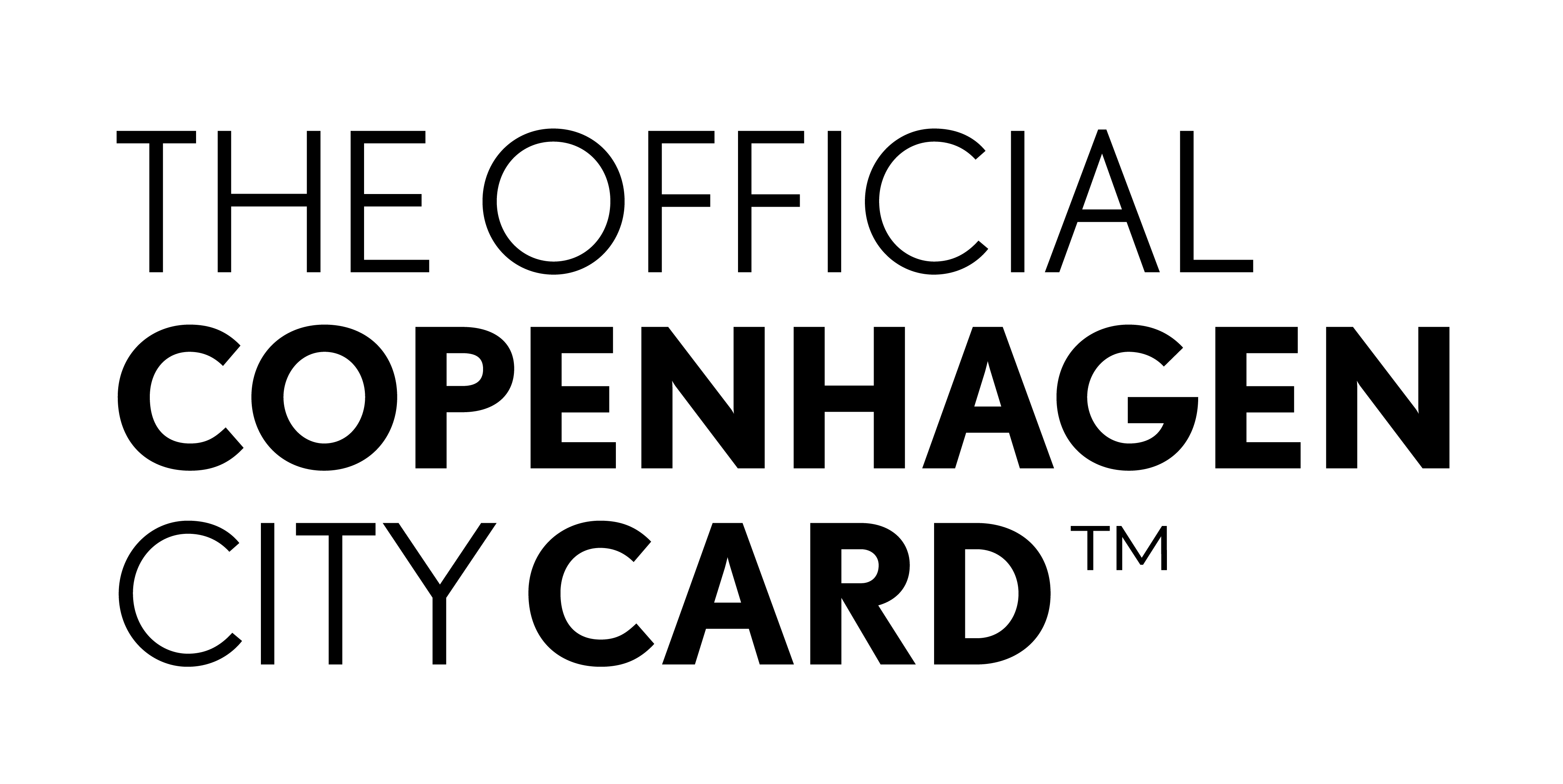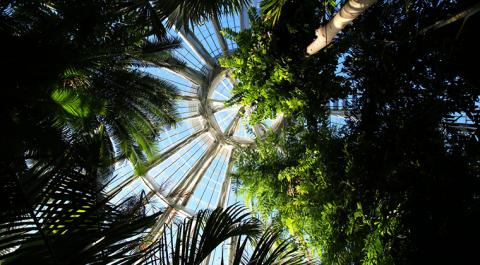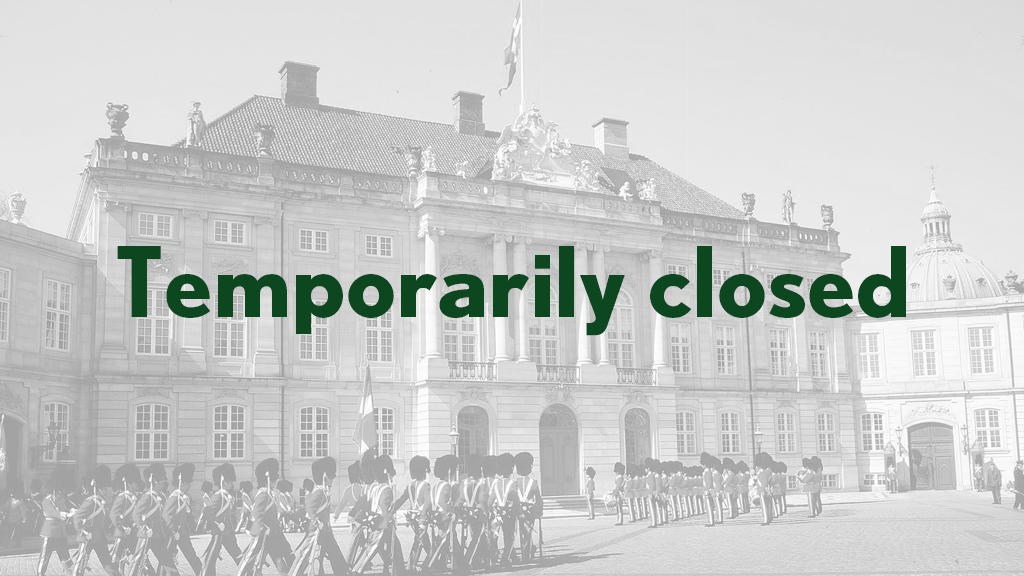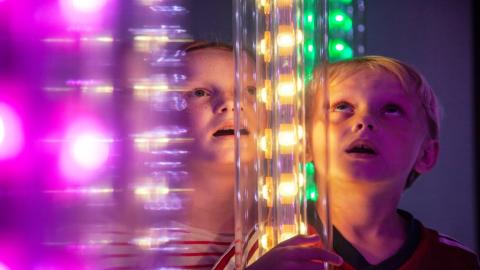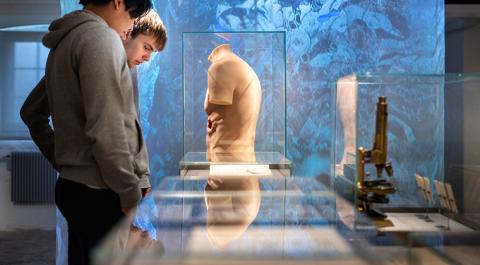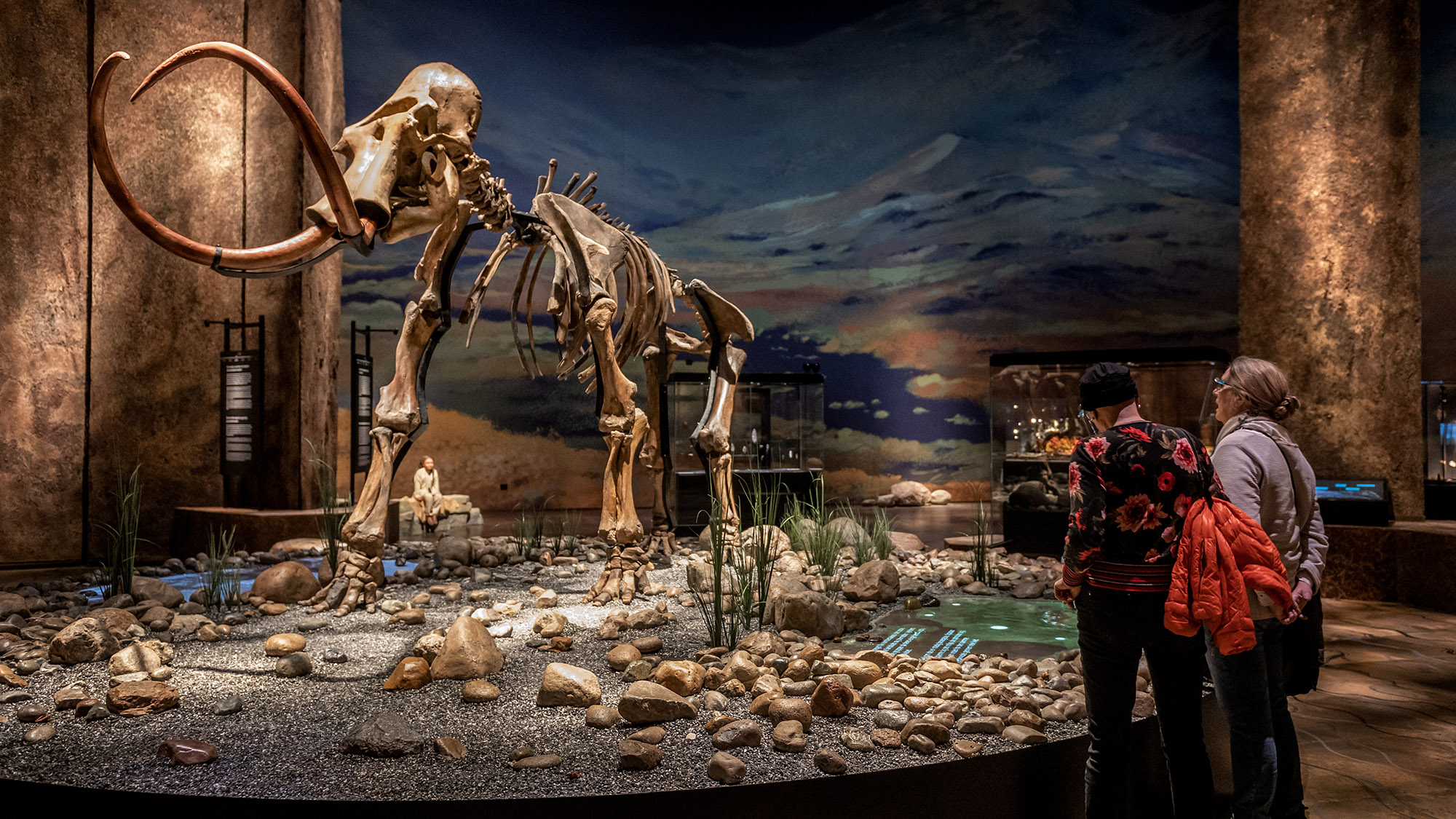
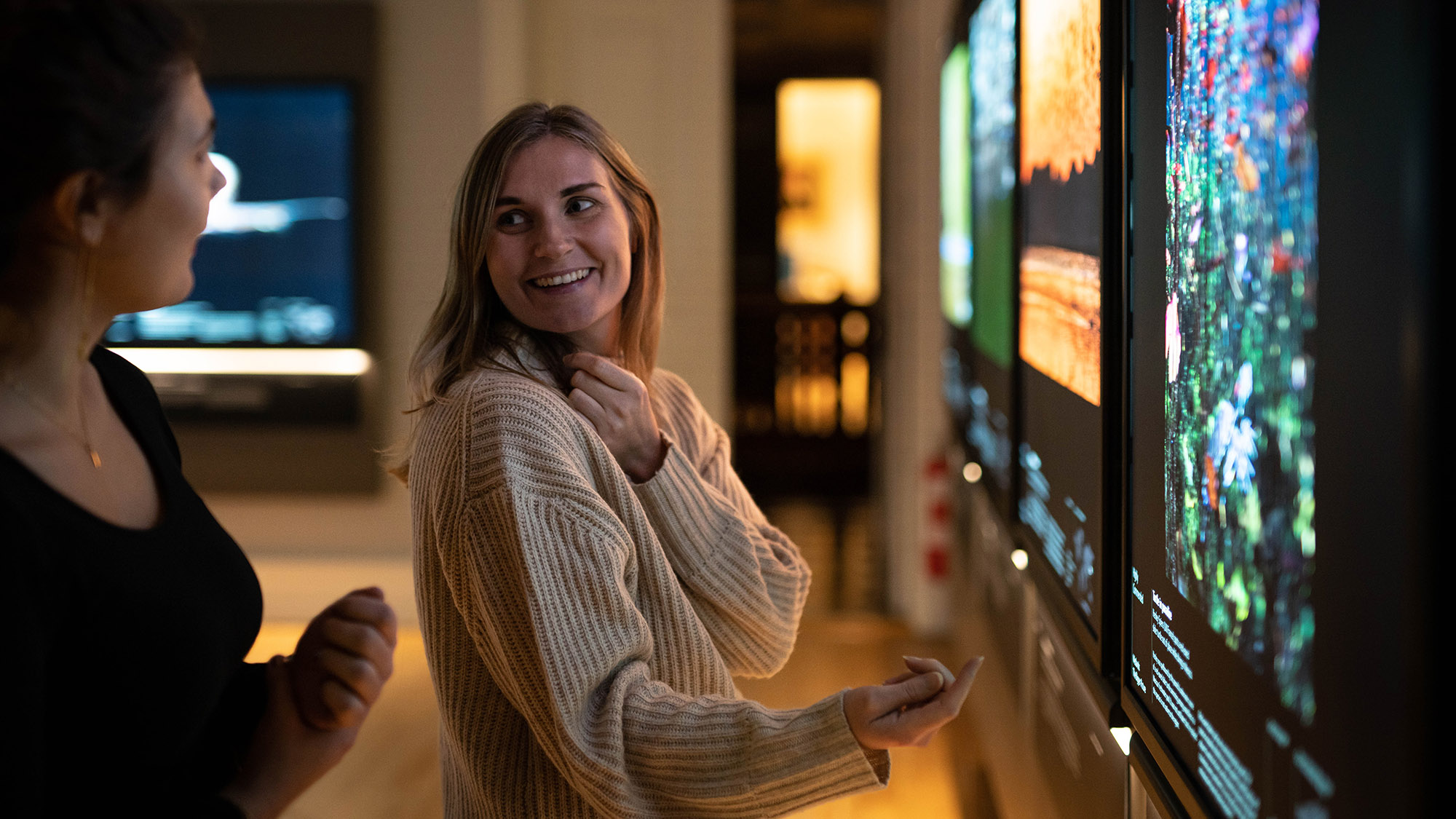

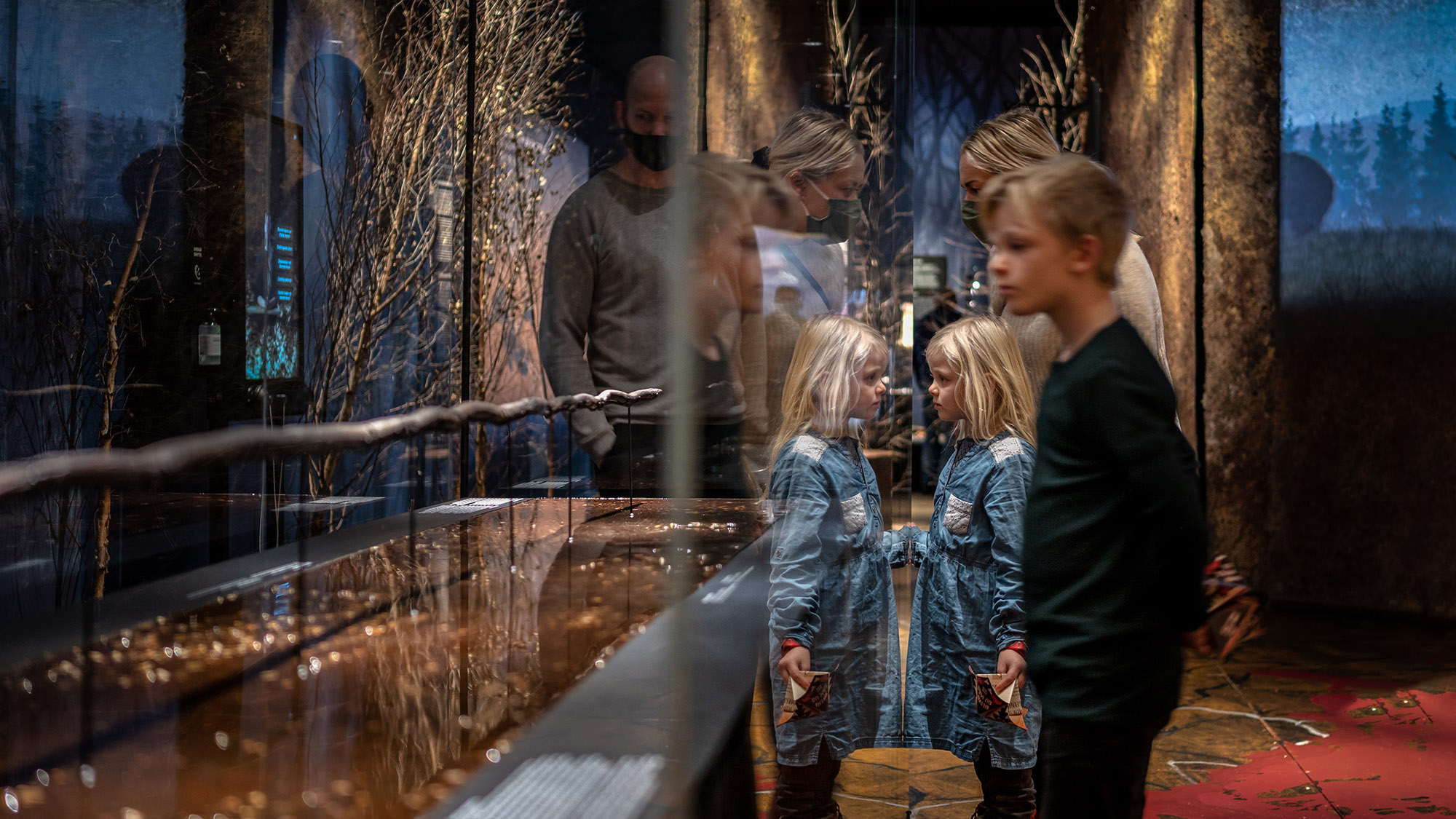
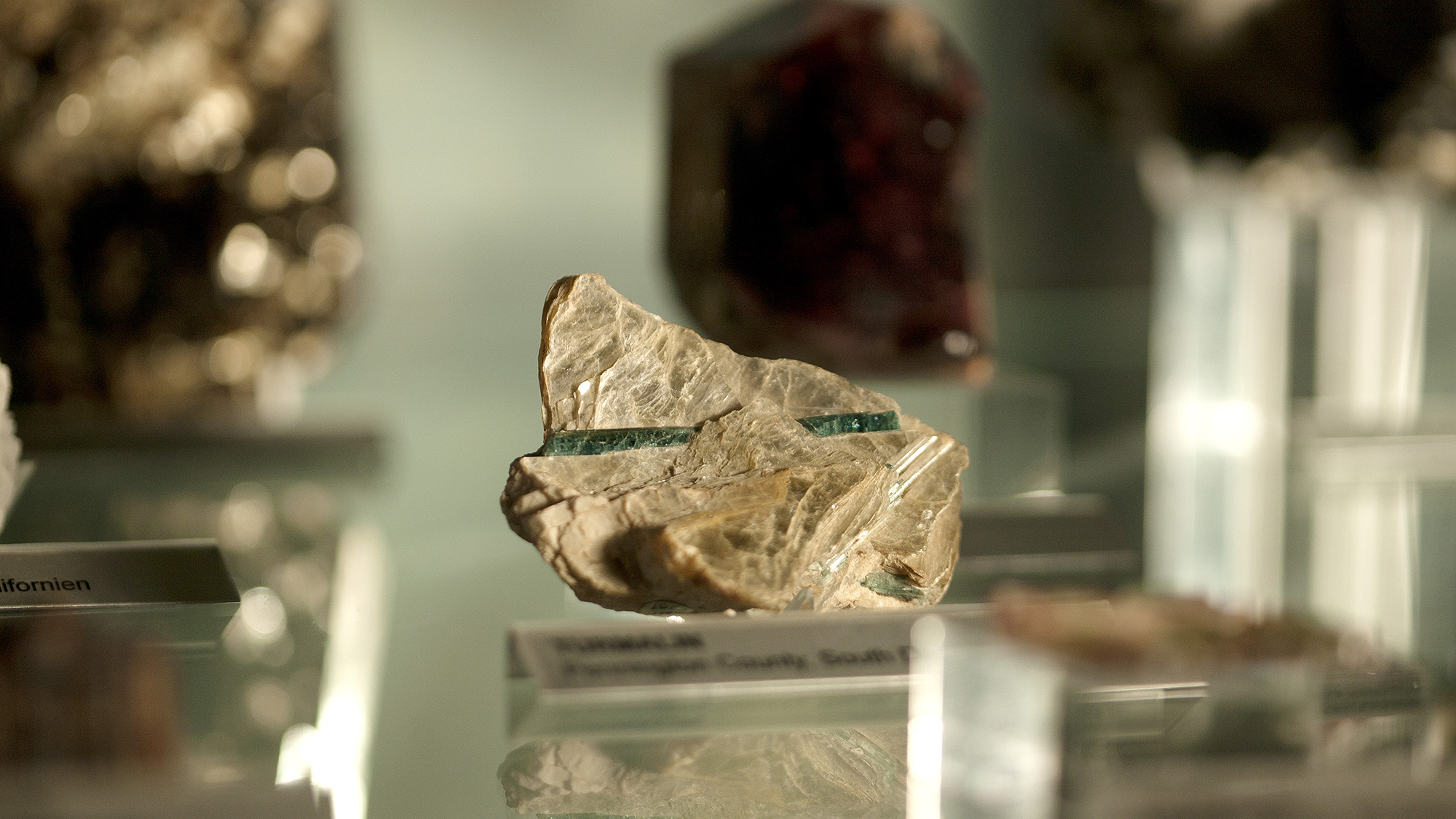
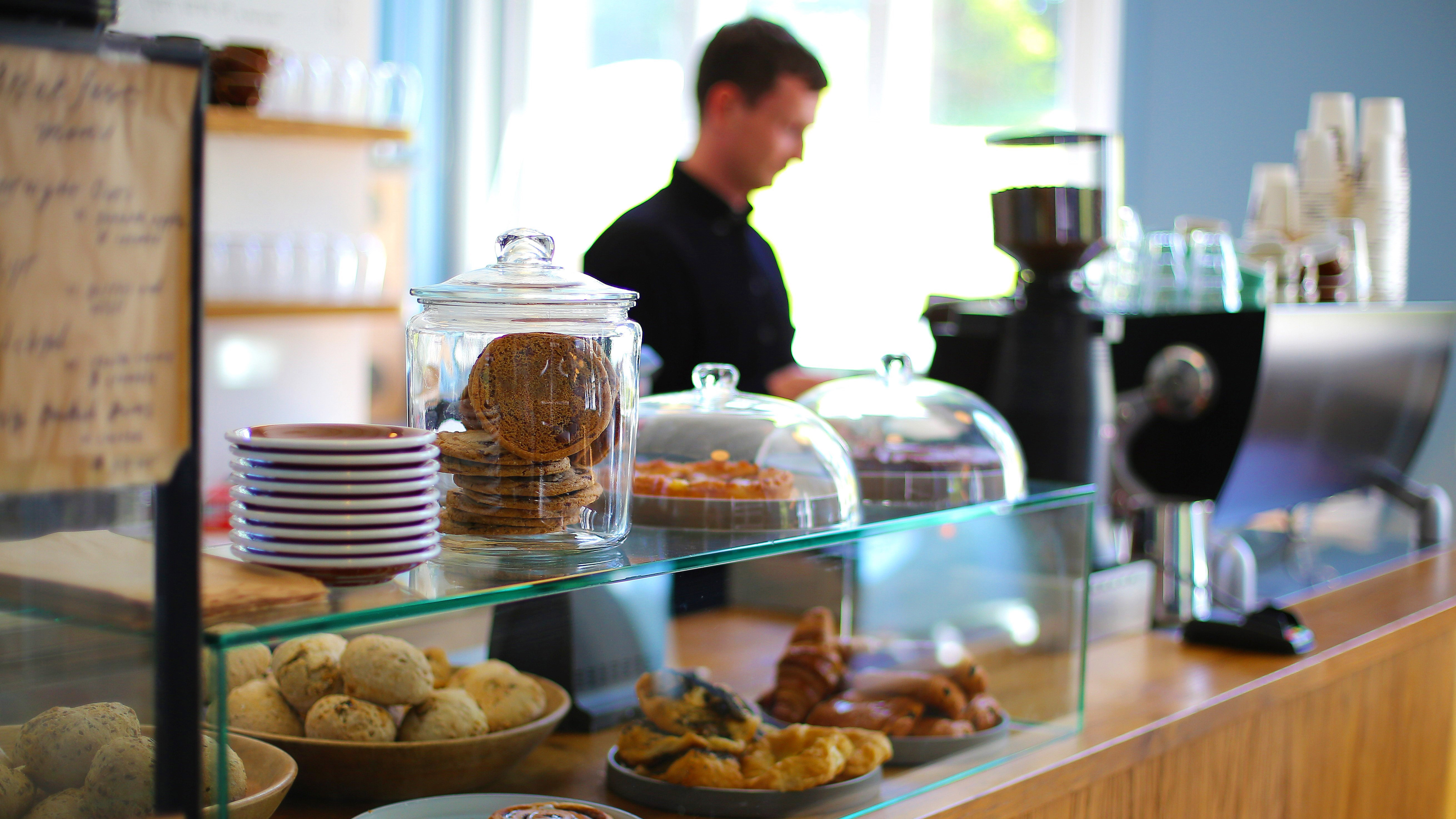
Natural History Museum of Denmark
Step into the beautiful mineral halls, touch a huge meteorite from outer space and explore the natural world in the changing exhibitions.
An annual highlight at the museum is the famous exhibition Wildlife Photographer of the Year, featuring the 100 best nature and wildlife photos worldwide. Experience the beauty and fragility of nature in an exhibition that delights millions of people every year. See more about the exhibition at wpy.dk.
Recharge in the café with a view of the Botanical Garden, where you can explore the museum's collection of rare plants and see the iconic Palm House.
Related Attractions
The beautiful Botanical Garden is a green oasis in the heart of Copenhagen and home to Denmark’s largest collection of plants from all over the world, incl. species that are extinct in the wild. Here you can go explore among rare cacti and cycads from the age of the dinosaurs.
In the iconic Palm House, you get to experience the rainforest from above, and in the summertime, you will find colourful butterflies fluttering among spectacular orchids and vanilla plants in the Butterfly House. The beautiful, Victorian building was built in 1874 and designed by the architect Peter Christian Bønecke and is made from cast iron and glass. The inspiration came from Crystal Palace in London, built for the 1852 World Exhibition.
The garden has a charming shop and a coffee cart that offers refreshments on sun-blessed days.
The Botanical Garden is part of the Natural History Museum of Denmark, which is situated in the corner of the garden.
In Copenhagen ZOO, you can meet more than 4,000 fascinating animals and travel between continents in just one day.
Get familiar with the iconic giant pandas while dining in the state of the art Panda House. Experience unforgettable close encounters with polar bears and see the world from a giraffe’s perspective at the savannah. Discover lots of animal facts and enjoy a meal from the grand selection of food stalls. Please visit the Zoo's website to learn about feeding-times, new animals-babies and the daily programme.
Architecture at Copenhagen Zoo
The animals aren't the only thing to marvel at in the zoo. The zoo is also home to some architectural delights, not least the panda habitat designed by Bjarke Ingels Group, and the elephant house, designed by Norman Foster. Architecture fans might also enjoy looking at the Hippopotamus House, which opened in 2007 with walls patterned like a hippo's skin, and the Arctic Ring, which allows you to see the polar bears swimming under water.
Restaurants in Copenhagen Zoo
At Bistro Panpan, you can enjoy French dishes with an Asian twist at the Panda House. At Cakes & Dreams, you can enjoy delicious pastries. Spisehuset FOLK is a cozy and traditional restaurant serving classic, Danish food such as open sandwiches. All around the Zoo, there are snack stalls and stands where you can buy hot and cold drinks and ice creams.
A world to explore awaits.
ZOO is filled with explorations every day 365 days a year.
Please be aware that opening hours may change rapidly - we recommend checking the ZOO's website before going
Let’s Play Science!
Experimentarium is a world class science centre in Hellerup, just 6 km north of Central Copenhagen.
Explore Science the Danish Way! At Experimentarium science is hands-on, intuitive and fun for all ages and nationalities – you simply jump right in and get started!
TIME Magazine has named Experimentarium one of the World’s 100 Greatest Places in 2018.
The science center re-opened in 2017 after a complete makeover more than doubling it in size. Experimentarium brings science to life through hands-on exploration. Three indoor floors filled to the brim with interactive exhibitions, a science themed museum shop, a science-themed eatery and an interactive rooftop with a spectacular view.
Future Human - How far will you go?
Right now, artificial intelligence is rapidly turning the world upside down. But there are more technologies on the horizon with the power to change your life. Are you feeling depressed? Fix it with a brain implant! Have you lost your beloved pet? Why not clone it? Don’t trust your new partner? Test them with emotion-sensing technology! Soon you’ll be able to do it! But would you want to?
Future Human – How Far Will You Go? zooms in on six technologies that are expected to have a significant impact on our lives in the next 10-15 years.
Hands-on science highlights
Experience a lifetime in the Tunnel of Senses, be tricked by light and darkness in the Labyrinth of Light and jump to be part of the movie in the Interactive Film Theatre – the world’s first interactive cinema based on movement sensors.
Dive into the physics and chemistry of water and go on an underwater safari in the mysterious submarine in Experimentarium’s water exhibition The Beach. Get the ball rolling in the world’s largest interactive ball track and learn an important lesson about world trade and CO2. Do not miss The Bubblearium, where you can blow the most amazing soap bubbles and learn fascinating bubble-science.
The Miniverse – science for toddlers
Children are natural born scientists - every day they discover new things and learn about the world through play. The Miniverse is a fun, inspiring and safe environment that nurtures children's basic understanding of science. For children aged 1 to 5 years and their adults.
How do you get here?
S-Train to Hellerup Station or Svanemøllen Station or Metro M3 to Poul Henningsens Plads Station. From either station take bus 1A to Tuborg Boulevard (Standvejen).
Out of this world experience for the whole family
NB: Opening hours may vary with special events. Please check Planterium's own website for updated opening hours.
Immerse yourself in the starry sky and experience films in the unique Planetarium Dome, which has recently undergone a complete transformation. The Planetarium has the largest tilted dome in Europe, an enclosing canvas, a razor-sharp visualization in 8K and second-to-none sound system.
Learn more about where we came from and what we’re made of in the Big Bang exhibition in the room Cosmos or explore the installation Rings of Saturn and put your senses into play. Planetarium conveys the knowledge of astronomy in the form of films, exhibitions, lectures and other special events.
On weekends and Holidays Planetarium also offer a special activity programme for both adults and children
Entrance and movie
With your Copenhagen Card, you can visit the exhibitions and watch one movie in The Dome. You can find the current movies here.
A must-see museum for all who is curious about the human body, disease, and health.
Medical Museion is not for delicate souls – diseases and their treatment have always been dramatic. But if you dare to face how the human body has been understood and treated over time - from antiquity to the age of the gene - this is the place for you.
Explore the beautiful exhibitions in the historic Royal Academy for Surgeons from 1787.
Medical Museion has one of the biggest and richest historical collections of medical artefacts in Europe. The collections contain 150,000 — 250,000 artefacts, depending on what counts as a individual artefact. We also have a large image collection, a document archive, and a historical book collection.
Exhibithions:
Mind the gut:
Our brain and bowels are under examination in the exhibition Mind the Gut. Through a thought-provoking blend of science, art and history, the exhibition explores the complex connections between our mind and our guts. Brain, gut feelings, identity, bowels, bacteria, microbiomes – all interlinked.
Mind the Gut shows, how doctors researchers, patients and artists have tried to understand and treat the complex relation between mind and gut throughout time. An enigma, which have occupied us through millennia and still does through scientific experiments, trendy lifestyle tendencies and fierce debates about health.
The body collected:
The human body has been collected for medical research and teaching during the last few centuries, and body parts have been prepared, preserved and conserved.
The exhibition ‘The Body Collected’ presents for the first time a large selection of historical collections of human remains from the 18th century to now. The oldest specimens come from research collections of fetuses, skeletons, bones, organs, and histological samples. The latest arrival are biopsies, cells, and DNA, as preserved in biobank freezers. The collections have switched focus as our understanding of health and disease are improved, and as a consequence of technological advances.
What did the very first cars look like? How about the history of the telephone - from the first of its kind to the smartphones we all know today? And what does a space capsule look like? Come and learn more about the fantastic and breakthrough technical inventions and the people behind them.
The museum has an impressive collection of steam engines, electrical inventions, bicycles, cars and aeroplanes. There is also a pewter workshop from the 1920s and fire and life-saving station from around 1960. The Danish Museum of Science and Technology invites you on a journey where bridges will be built between you and Denmark’s technological history. Our unique collection of cars represents the Danish history of motor vehicles. For instance, you can experience the Hammel Car from 1888, the first automobile of the Royal Danish Family and a Volkswagen Beetle from 1948. The museum also houses a large collection of planes. There are old propeller planes, helicopters, gliders, private aircrafts, passenger planes and many former planes of Defence Command Denmark.
The Danish Museum of Science and Technology is for the whole family. From the first exciting fascination of machines to the critical contemporary views of everyday technology to the nerdy insight into mechanics and function. At the museum, the objects form the basis of the stories and we will look at the first technical inventions, today’s technology and what the future may bring.
The Danish Museum of Science & Technology is more than 100 years old and some of the museum objects are even older – from extremely heavy and big computers the size of an elephant to small, pocket-sized smartphones. The world of technology is constantly developing, and we can only try and guess how the future robotic vacuum cleaners, virtual reality and cars will look like.
The Open Air Museum (Frilandsmuseet) is one of the oldest and largest open-air museums in the world.
Here you can experience farms, cottages, and mills from Denmark, Sweden, and the Faroe Islands. Each building has been carefully dismantled, moved and reassembled in beautiful natural surroundings. Spread across 86 acres of land, the Open Air museum houses more than 50 farms, mills, and houses from the period 1650-1940, and gives you a chance to step back into old Denmark, as it was in the past.
At the Open-Air Museum, you can step back in time and walk through fully furnished homes, meet adorable farm animals and talk to the museum peasants about life in the olden days. The museum provides a fully interactive experience. Meet the volunteers who operate the old wooden windmill, gather at the village pool where, in a small Funen house, women bake bread and arrange wool, or find out all about the manor's bees from the beekeeper's guild. There's plenty to get involved with as you discover the past come to life.
Country life as it wasThe buildings were re-erected with gardens and surrounding landscape to give visitors an impression of the history and environments of the country life as it was. Historic houses, open-air theatre, livestock and a petting zoo, old-fashioned food and grocery sales from the cooperative market in the railway town all stand ready to be explored. The buildings have been restored exactly as they appeared when farmers, craftsmen and the distinguished people of the estate inhabited the buildings.
Virtually every region in Denmark and the Faroe Islands, as well as the former Danish provinces of southern Sweden and northern Germany, is represented at the Open Air Museum so you can travel the length and breadth of Denmark in a single afternoon - just an easy train ride from Copenhagen center. The museum also boasts 25 historic gardens with flowers, fruit trees and utility plants showing different practices throughout time, as well as three beautiful old windmills and several watermills.ACTIVITIES Throughout the year the Open Air Museum is full of fun and hands-on activities for the entire family. During the opening season the museum puts on activities that include everything from Freddy Frogface Festival to cozy garden days. The museum also puts on seasonal events and drama productions, and has an intriguing murder mystery from 1865 that you, as a visitor, are asked to solve.
Changes in programming and visitor guidelines may occur. Please check our website to see the opening hours and programming.
Transport
Take the S-train line E to Sorgenfri and a 10 minute walk to the museum. Bus 184 and 194 stops at the main entrance, Kongevejen 100. The Jægersborg-Nærum train stops in Brede near Frilandsmuseets north entrance.

